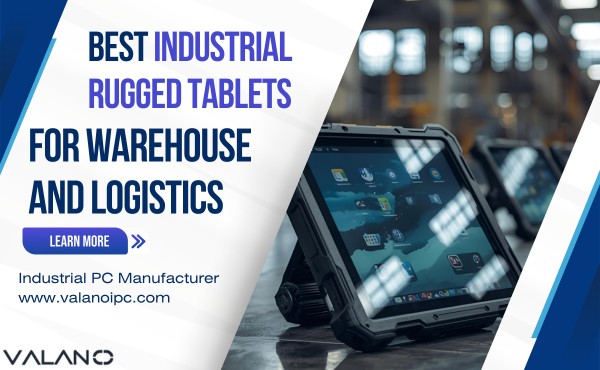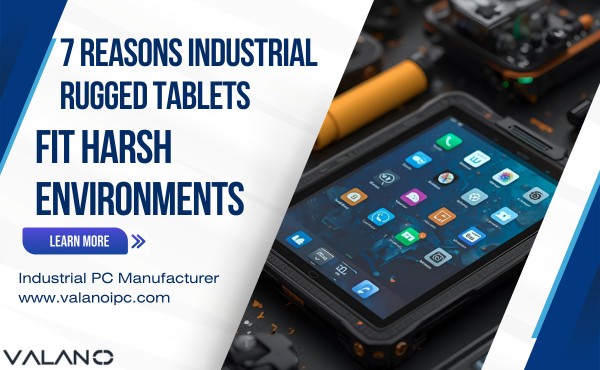
Touchscreen technology has transformed the way we interact with modern devices, enabling direct, intuitive control through gestures such as tapping, swiping, and pinching. By eliminating the need for external peripherals like keyboards or mice, it offers a streamlined and space-saving user interface.
In recent years, the adoption of touchscreen interfaces has expanded rapidly beyond smartphones and tablets, becoming integral to kiosks, industrial HMIs (human-machine interfaces), automotive infotainment systems, and healthcare equipment. According to MarketsandMarkets, the global touchscreen display market is projected to grow from $5.8 billion in 2024 to $8.7 billion by 2029 driven by rising demand for interactive and user-friendly interfaces across sectors.
This article explores the evolution of touchscreen technology, its core types, industrial applications, and the future trends shaping the industry.
Key Takeaways
Touchscreen technology enables intuitive device control through gestures, replacing traditional input devices.
The market for touchscreen displays is experiencing steady growth, especially in industrial, medical, and automotive environments.
Multiple types of touchscreen technologies exist—capacitive, resistive, infrared, and SAW—each suitable for specific applications.
Touch interfaces improve accessibility and usability for a wide range of users, from children to older adults.
Emerging innovations such as predictive touch and gesture-based interaction are expanding the role of touchscreens in smart systems.
The Evolution of Touchscreen Technology: From Invention to Industrial Applications
Early Developments (1960s-1980s)
Touchscreens started in the mid-1900s. In the 1960s, scientists worked on displays that reacted to touch. Early designs were simple but helped future improvements. By the 1980s, companies like Apple showed touch controls. One example was a poster showing disabled people using touch with Macintosh computers. This was a big step, showing how touchscreens could help people and make devices easier to use.
These early ideas aimed to make technology simpler and more helpful. Touching a screen directly was new and exciting. It led to touchscreens becoming common in later years.
Transition to Mobile Devices (1990s-2000s)
The 1990s marked a significant shift as touchscreens became integral to mobile devices. The IBM Simon, launched in 1994, was the first smartphone featuring a touchscreen, paving the way for more intuitive user interfaces. This era emphasized the convenience and efficiency of touch-based interactions, setting the stage for broader applications beyond consumer electronics.
Industrial Integration and Modern Advancements (2010s–Present)
In recent years, touchscreen technology has been increasingly integrated into industrial settings. Ruggedized touchscreens are now replacing physical switches and buttons in control rooms, offering reconfigurable interfaces that adapt to evolving processes . This adaptability is crucial in the era of Industry 4.0, where flexibility and real-time responsiveness are paramount.
Types of Touchscreen Technologies in Industrial Applications
Touchscreens come in different types, each with its own way of working. Knowing these types helps you see how devices react to touch.
Capacitive Touch Screens
Capacitive touch screens are very common today. They use your skin’s natural electricity to sense touch. When you touch the screen, it notices changes in the electric charge. A grid of tiny sensors finds where your finger is.
These screens are quick and strong. They only need a soft touch, so they’re great for phones and tablets. Compared to resistive screens, they are clearer and respond faster. For example:
Capacitive screens react instantly by sensing electric changes.
Resistive screens need pressure, which makes them slower.
Feature | Capacitive Touchscreen | Resistive Touchscreen |
|---|---|---|
Responsiveness | Very fast | Slower |
Durability | Strong | Decent |
Optical Performance | Very clear | Less clear |
Touch Sensitivity | Light touch | Needs pressure |
Resistive Touch Screens
Resistive touch screens work in another way. They have layers with a small gap between them. Pressing the screen makes the top layer touch the bottom one. This creates an electric signal to find the touch spot.
These screens are less sensitive but cost less. They work well with gloves or a stylus. However, they are not as strong or clear as capacitive screens. You’ll see them in ATMs, older devices, and factory machines.
Infrared Touch Screens
Infrared touch screens use light beams instead of layers. Sensors make a grid of invisible light across the screen. When you touch it, your finger blocks the light, and the sensors find the spot.
These screens are very accurate and don’t need you to press. They are tough because they don’t use fragile layers. But dust or bright light can mess with the sensors. Infrared screens are used in kiosks, big displays, and factory tools where accuracy matters.
Surface Acoustic Wave (SAW) Touch Screens
SAW touch screens use sound waves to find your touch. These screens send ultrasonic waves across the glass surface. When you touch it, your finger blocks the waves. Sensors figure out where the touch happened by the break in the waves.
SAW screens are clear and strong. They let almost all light through, making them great for clear displays. This is useful for kiosks, medical tools, and interactive screens. The glass is scratch-resistant, so it lasts longer and needs less fixing.
Materials Behind Touchscreen Technology: What Makes It Work
Durable Glass and Conductive Coatings
Industrial touchscreens often use strengthened glass with conductive coatings like indium tin oxide (ITO) to ensure durability and responsiveness. These materials withstand harsh conditions, including extreme temperatures and exposure to chemicals, making them suitable for manufacturing environments.
Protective Layers and Sealing
To enhance longevity, touchscreens incorporate protective layers and sealing techniques that prevent ingress of dust and liquids. This is particularly important in industries like food processing and pharmaceuticals, where hygiene and cleanliness are critical.
Infrared Sensors and Piezoelectric Materials
Infrared sensors and piezoelectric materials add special features to touchscreen technology. Infrared screens use invisible light beams to find touch points. When your finger blocks the light, sensors locate the touch. These screens are very precise and strong, making them good for kiosks and factory tools. But dust or bright light can cause problems.
Piezoelectric materials, like barium titanate (BaTiO3) and PVDF composites, improve touchscreens by quickly sensing pressure changes. These materials are used in advanced tools, such as AI systems and tiny devices.
Evidence Description | Key Findings |
|---|---|
Fast response time of piezoelectric sensors | Helps detect pressure quickly, useful for AI tools. |
Composite material with PVDF | Boosts physical strength and piezoelectric ability. |
P(VDF-TrFe) aligned nanofiber sensor | Offers strong piezoelectric effects and fast reactions. |
Miniaturization of inorganic elements | Helps create tiny devices for wearable tech. |
Piezoelectric sensors also measure pressing and sliding forces instantly. This makes them perfect for special uses in factories and hospitals.
Advantages and Limitations of Touch screens Interfaces
Key Advantages (e.g., Accessibility, Space-Saving Design, Multi-Touch Support)
Touchscreens have many benefits that make devices easier to use. One big advantage is better accessibility. They let people interact directly with devices, which helps kids, seniors, and those with physical challenges. For example:
Simple gestures like swiping or pinching feel natural and easy.
Research shows touchscreens help older adults stay independent and active.
Touchscreens also save space by removing the need for keyboards or buttons. This makes gadgets thinner and easier to carry. Features for visually impaired users improve their ability to find information and use devices. Studies show these features make devices more user-friendly.
Another great feature is multi-touch support. It lets you zoom, rotate, or do other actions with simple gestures. This makes tasks faster and easier. Whether on a phone or a kiosk, touchscreens make using devices simpler and more enjoyable.
Common Limitations (e.g., Sensitivity Issues, Environmental Constraints)
Touchscreens have some downsides that can make them harder to use. Sensitivity problems are common. For example, resistive screens need pressure to work, which slows things down. Environmental issues like dust, water, or extreme heat can also cause problems.
Public touchscreens, like those at ATMs or kiosks, have extra risks. They can spread germs, with studies showing a small chance of infection. Regular cleaning helps reduce this risk.
Another problem is using touchscreens in bright sunlight. Glare makes it hard to see the screen. Also, wearing gloves or having wet hands can make capacitive screens harder to use. Even with these issues, new improvements aim to fix these problems and make touchscreens work better in all conditions.
Touchscreen Technology Applications in Everyday and Industrial Use

Mobile Devices and Computers
Touchscreens have changed how we use phones and computers. Smartphones, tablets, and laptops now depend on touchscreens to work. This makes devices easier and more fun to use. You can tap, swipe, or pinch to do tasks quickly. Physical buttons or keyboards are no longer needed.
Studies show more people are using touchscreens as they get cheaper and better. Businesses like them because they last long and handle heavy use. The table below shows key points:
Evidence Type | Description |
|---|---|
Adoption Rate | Businesses use touchscreens more as prices drop. |
Performance | Durable screens are great for industries like healthcare. |
Customer Expectation | Touchscreens are now expected due to popular smartphones. |
This growing use shows how touchscreens are now a big part of daily life.
Education and Interactive Learning
Touchscreens are important in schools today. Interactive screens and tablets make learning fun and exciting. Students can use apps, games, and activities to learn better. Research shows even toddlers gain from using touchscreens.
Study | Findings | Age Group |
|---|---|---|
Wang et al. (2016) | Test scores improved with touchscreen apps. | 5-6 years |
Patchan and Puranik (2016) | Learning outcomes got better with touchscreens. | Young children |
Strouse and Ganea (2017) | Toddlers showed positive learning effects. | Toddlers |
These studies prove that touchscreens make learning more interactive and effective.
Healthcare and Medical Equipment
Touchscreens help doctors and nurses work faster and better. They are used in tools for patient care, medical records, and online doctor visits. Touchscreens let healthcare workers update and check data quickly. This reduces mistakes and helps them make better choices.
Doctors use mobile devices and apps for their work.
Benefits include fewer errors and faster record-keeping.
Touchscreens improve patient care by making processes smoother.
Patient Monitoring: Shows live health data like heart rate.
Electronic Medical Records (EMR): Makes keeping records easier and more accurate.
Telemedicine: Allows doctors to help patients from far away.
A Deloitte report says most doctors think touchscreens improve their work. These uses of touchscreens make healthcare better for everyone.
Retail, Automotive, and Industrial Uses
Touchscreens are important in stores, cars, and factories. They make tasks easier and improve how people use devices.
In stores, touchscreens help customers shop faster. Self-service kiosks let you look at items, order, and pay without help. Digital screens show ads and product details, making shopping more fun. Store workers use touchscreens to check stock quickly. More people want smartphones and smart home gadgets, so touchscreens are used more in stores.
In cars, touchscreens change how drivers use features. Modern cars have systems for maps, music, and safety alerts. These systems work with simple touches. Car makers use strong and fast capacitive touchscreens. By 2033, the car touchscreen market may grow to $25 billion.
Year | Market Size (USD) | Growth (%) |
|---|---|---|
2025 | 15 billion | 7 |
2033 | 25 billion | – |
In factories, touchscreens help workers do jobs better. Machines and tools are controlled with touchscreens. They also track data and watch processes. PCAP screens work well in tough places like dusty or wet areas. They are easy to use, so workers learn faster.
Touchscreens are useful everywhere. Whether shopping, driving, or working, they make tasks simpler and quicker.
The Future of Touch screen Technology: Trends Shaping the Industry
Touchless Gesture Controls
Touchless gestures change how we use devices. You can control screens without touching them by moving your hands. For example, wave to scroll or pinch the air to zoom. This makes using devices easier and cleaner, especially in public places like hospitals or buses.
More people want touchless technology now. The market for it may grow from $17.7 billion in 2023 to $51.5 billion by 2030. That’s a big yearly growth of 23.4%. Better computer vision and machine learning make gestures more accurate. These upgrades help create smoother user experiences.
Predictive Touch Technology
Predictive touch is another exciting idea for touchscreens. It guesses what you’ll do next and reacts faster. For example, a screen might know where you’ll tap and respond quickly, saving time.
Industries are already using predictive touch to work better. In planes, the A320neo cockpit has touchscreens for flight data. These screens help pilots finish tasks 20% faster. Pilots using them in training also perform better. This shows how predictive touch improves both learning and real-life use.
This tech also helps in automated jobs. Predictive touchscreens give instant feedback, making work smoother. As multi-touch gestures improve, using devices will feel easier and more accurate. Predictive touch is making devices smarter and quicker.
Haptic Feedback & Material Innovation
Tactile feedback, like Apple’s Haptic Touch, mimics real button press sensations. Future screens may include thermal haptics to simulate temperature. Stronger, more sensitive materials are enabling this innovation, making interactions more immersive and accurate.
Touchscreen technology has transformed industrial and daily interactions, replacing traditional controls with intuitive, flexible interfaces. With over 1.5 billion smartphones using multi-touch features and 75% of new cars in 2023 adopting touchscreen consoles, it’s clear that the trend is widespread. Innovations such as predictive touch, gesture control, and enhanced haptics are driving the next evolution.
As industries demand smarter and cleaner interfaces, touchscreens will remain a core part of digital transformation.







